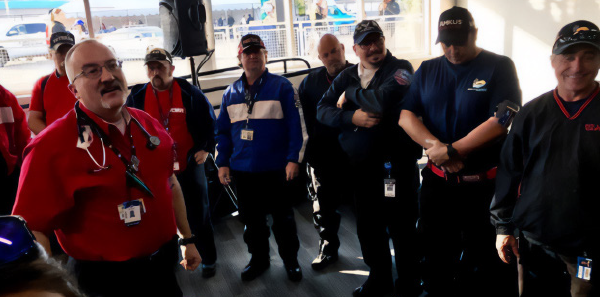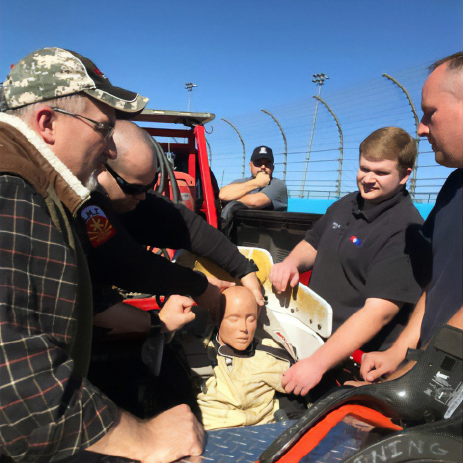
Paul Kozak, MD, FACEP, never cared about car races as a kid. Watching ABC’s Wide World of Sports, he thought the wide-angle camera made it seem like cars were going around the track at 30 mph. Fast-forward to his time in residency at Methodist Hospital in Indianapolis, where an interesting opportunity involving speed racing presented itself. Some of the attending physicians at the hospital also worked for the Indianapolis Motor Speedway and asked Dr. Kozak if he’d like to moonlight as a physician at the track. He thought it’d be a good way to make some extra money.
Explore This Issue
ACEP Now: Vol 41 – No 02 – February 2022Once he got to the track, seeing and feeling a car whizz by during a practice lap was like nothing he’d ever experienced. It was there that Dr. Kozak decided to do an elective at the Indianapolis Motor Speedway—beginning a passion spanning two decades. “The first lap of the Indy 500, with all 33 cars going around the track at full volume, never stopped raising the hairs on the back of my neck,” he says.
Today, Dr. Kozak is medical director of the Phoenix Raceway, a position he’s held since 1994 while also working as a consultant with the Mayo Clinic in Scottsdale, Arizona. He recently spoke with ACEP Now about on-track resuscitations, fire suits, if the sport can ever be made safe, and why it’s important to diversify your career.
ACEP Now: Describe your career path as a physician in motor racing.

Dr. Kozak (far left) assisting with track extrication training with the on-track crews.
Dr. Kozak: In my last year of residency, I had the option of doing a one-month elective at a racetrack in Indianapolis. I did driver physicals, used the Jaws of Life, and learned how to recognize a methanol fire versus an oil fire. My project was developing a mini emergency action plan for the track. Eventually, I graduated and moved to Arizona. The Indianapolis Racing League would race in Phoenix, and a physician I knew, Hank Bock, who was the medical director for the Indianapolis Motor Speedway and IndyCar Series, arranged for me to be a physician at the Phoenix Raceway. In 2007, I became the medical director.
I set up a mini elective at the track so if any residents were doing their EMS month during a race, I would show them what racing medicine is all about. Two of my residents have been working with me for 22 years.
Because I was involved in that track for so long, after Dale Earnhardt Sr. died in [a crash at the Daytona 500 in] 2001, NASCAR came up with the idea to have a nurse/physician/medical liaison program. They already knew me, so they asked if I would get involved with the project. I wrote the job description for liaisons and worked as a consultant for NASCAR for three years as one of the initial four doctors who were part of the program. We would go to different racetracks and analyze fire safety procedures and make recommendations, like who should be the director or what kind of services they needed.
ACEP Now: What do you love about racing medicine?
Dr. Kozak: I can’t think of someone better-suited to do this work than an emergency physician. You get to work with EMS, and if someone has a heart attack or impending labor, you’re right there. If it gets windy, the fans can get debris in their eyes or have an asthma attack. During part of the year, bee stings are common. The crew go from track to track and oftentimes can’t get back to primary care. You do blood pressure checks. If they forget their hypertension medicine or blood sugar is high or low, you check those things. I also do trauma evaluation for drivers who crash. If a driver eats a bad Dorito, for example, and is throwing up, I’ll prescribe a nausea medication to help the driver perform.
Pages: 1 2 3 | Single Page


No Responses to “Practicing Medicine in the Fast Lane”